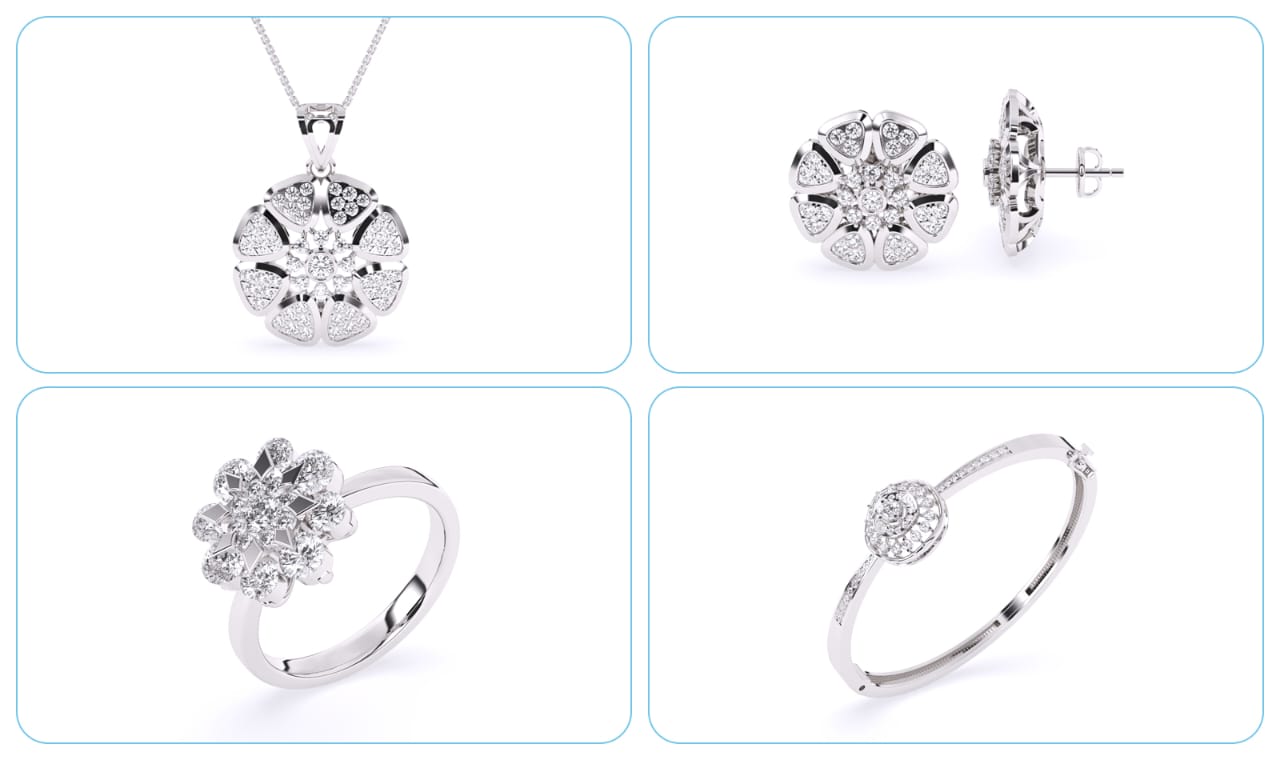No products found.
No products found.

28 April 2025
White gold has become a staple in modern jewellery design, loved for its bright silvery hue and timeless elegance. But what is white gold jewellery, really? Is it pure gold, or a clever alloy? How does it compare to silver or platinum?
In this post, we’ll break down the composition, price, care tips, and how it fits beautifully with AYAANI’s lab-grown diamond jewellery.
White gold was first developed in the 19th century as a platinum substitute. It gained popularity in the 1920s during the Art Deco era and has since become a favourite for bridal and luxury pieces.
Its neutral colour complements diamonds and gemstones beautifully, making it perfect for rings, earrings, and necklaces. Unlike yellow gold, it offers a cool-toned elegance similar to platinum, but often at a more affordable price.
White gold is an alloy, meaning it’s made of pure gold mixed with white metals like palladium, nickel, or silver to achieve a pale, white colour.
The “white” appearance comes not just from its composition but also from a rhodium plating that adds a reflective finish. This plating needs occasional reapplication to maintain its brightness.
No. The karat rating tells you how much pure gold is in the alloy:
The rest is metal that influences colour and strength.
White gold is harder than yellow gold due to the added metals, making it suitable for engagement rings and everyday wear.
Rhodium plating adds a stunning lustre, often resembling platinum.
Nickel, commonly used in white gold, may cause allergies and skin reactions in some people.
Opt for 18K white gold or alloys made with palladium, especially from brands like AYAANI, which prioritise skin-safe materials.
White gold prices fluctuate based on gold value and alloy cost.
Higher karat = more gold = higher cost.
White gold can be slightly more expensive due to rhodium plating, but both follow similar gold pricing trends.
Always look for the karat stamp (10K, 14K, 18K) and a reputable hallmark from a certified jeweller.
These ensure your white gold diamond jewellery is authentic.
Choose reliable jewellers like AYAANI who offer certified products with clear purity indicators.
Lab-grown diamonds, like those from AYAANI, shine brilliantly in white gold settings, offering ethical luxury at a great value.
AYAANI is a modern jeweller known for stunning, sustainable lab-grown diamond jewellery.
The clean, bright look of white gold enhances the sparkle of AYAANI’s diamonds, making each piece timeless and radiant.
Lab-grown diamonds reduce environmental impact while offering the same brilliance and elegance as mined ones.
Use warm, soapy water and a soft brush. Avoid harsh chemicals.
Keep in a soft pouch, separate from other metals to avoid scratches.
Re-plate rhodium every 1–2 years for a fresh, bright finish.
Learn the best methods to clean diamond rings.
White gold is dominating bridal trends, especially paired with oval or pear-shaped diamonds.
Stars like Jennifer Lopez and Beyoncé have showcased white gold rings, boosting their desirability.
White gold’s neutral elegance makes it a favourite for modern engagement rings and wedding sets.
White gold is more than just a shiny alternative; it’s a durable, elegant, and versatile choice for every style and budget. Whether you're eyeing a 14K everyday piece or an 18K heirloom, pairing it with AYAANI’s lab-grown diamonds guarantees brilliance with a conscience.
1. What is white gold composed of?
White gold is made by mixing pure gold with white metals like palladium, nickel, or silver.
2. Is 14K white gold better than 10K or 18K?
14K offers a great balance between durability and gold content, making it ideal for most wearers.
3. Does white gold cause skin allergies?
Some people may react to the nickel in white gold. Choosing 18K or nickel-free alloys helps avoid this.
4. How do you check if white gold is real?
Look for hallmarks (like 14K or 18K) and ask for certification from your jeweller.
5. Why choose white gold over silver?
White gold is more durable, scratch-resistant, and holds its shine better than silver.
6. Where can you buy ethical white gold lab diamond jewellery?
AYAANI offers ethically sourced, lab-grown diamond jewellery set in high-quality white gold.
7. Which costs more gold or white gold?
White gold usually costs more because it is alloyed with other metals like palladium or nickel to give it its white colour and durability.
8. What is more expensive, rose or yellow gold?
Rose gold is typically more expensive than yellow gold because it contains copper, which adds to its cost.
9. What is the highest karat of white gold?
The highest karat for white gold is usually 24K, but it is rarely used for jewellery because it’s too soft. Most white gold jewellery is 14K or 18K.
10. What is 375 white gold?
375 white gold refers to 9K white gold, meaning it is 37.5% gold and 62.5% other metals. It’s lower in purity and thus less expensive.
© 2025, AYAANI DIAMONDS. Developed & Maintained By Nothing Info, Designed & Marketing By Kyros Solution.